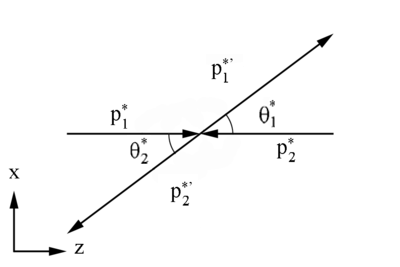Difference between revisions of "Limits based on Mandelstam Variables"
Jump to navigation
Jump to search
| Line 5: | Line 5: | ||
| − | |||
| Line 14: | Line 13: | ||
| + | As shown earlier, for identical masses in the center of mass frame, and the mass is invariant between frames | ||
| − | + | <center><math>P^{*2}=m^2</math></center> | |
| − | |||
| − | + | <center><math>s \equiv m^{2}+2 \mathbf P_1^* \mathbf P_2^*+ m_2^{2}</math></center> | |
| + | |||
| + | |||
| + | |||
| + | <center><math>s \equiv 2m^{2}+2 \mathbf P_1^* \mathbf P_2^*</math></center> | ||
| − | |||
